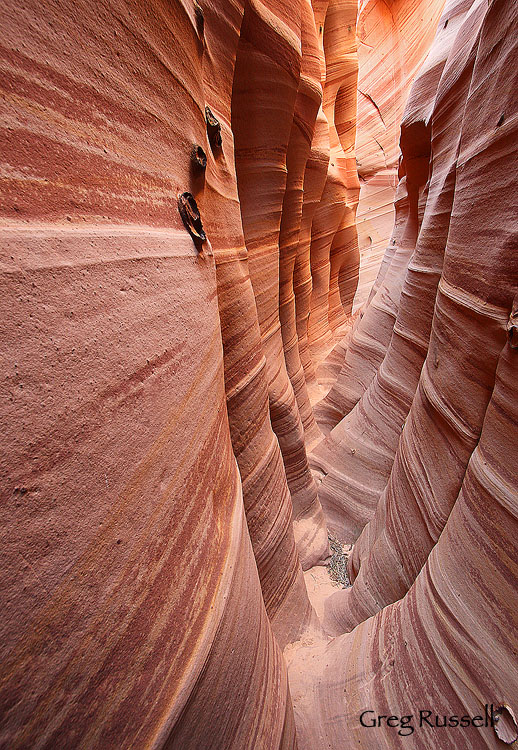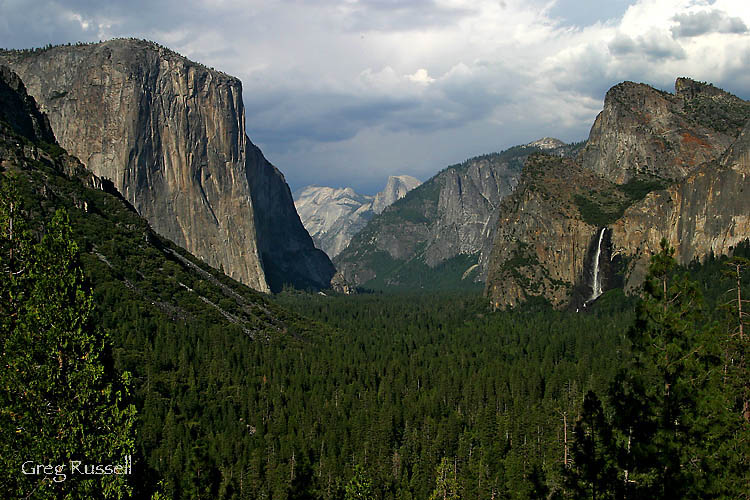We made an end-of-the-summer trip to Zion National Park this weekend. Since it was the last “official” weekend of summer (Labor Day weekend), we were joined by several thousand other people. A large percentage of those people saw most of Zion Canyon’s amazing sights: the Towers of the Virgin, Court of the Patriarchs, sunset on the Watchman, and some even got to experience hiking in narrows of the Virgin River. I know I never tire of seeing these sites. Zion really is one of my favorite of our National Parks.
Over the last couple of years, with the help of my dad, I’ve gotten more into exploring the canyons of the southwest, particularly in southern Utah. I recently wrote about trips to Zebra and Neon canyons, and have also descended Mystery and Behunin canyons in Zion, but unfortunately did not have camera gear with me on those trips. A few years ago, we descended the Subway (also in Zion), but I didn’t have a camera then, either. This Labor Day, the opportunity came up to hike through the Subway again*, so I jumped on it, and brought a small amount of camera gear.
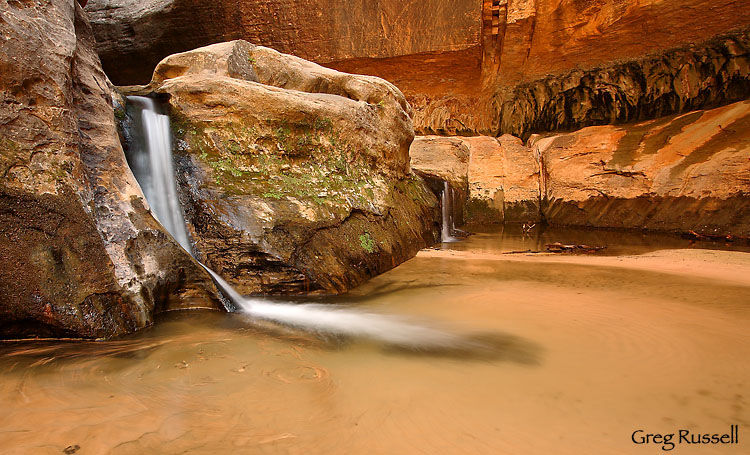 Inside the Subway, Zion National Park, Utah, September 2009
Inside the Subway, Zion National Park, Utah, September 2009
Technically, the Subway isn’t a difficult canyon. There are no spots where rappelling is absolutely necessary (although we did rappel twice) and the hike is otherwise rather straightforward. It is long, however, and there is at least one major swim (we encountered 2) where your gear gets submerged, no matter how good of a swimmer you are. So, I wanted to save weight, and most of all I wanted to keep my gear dry. I bought two Outdoor Research Hydroseal dry bags and essentially double-bagged my gear. I then placed it at the top of my pack, under the reasoning that if I were swimming with a pack on, the top of the pack would likely be in the water the least.
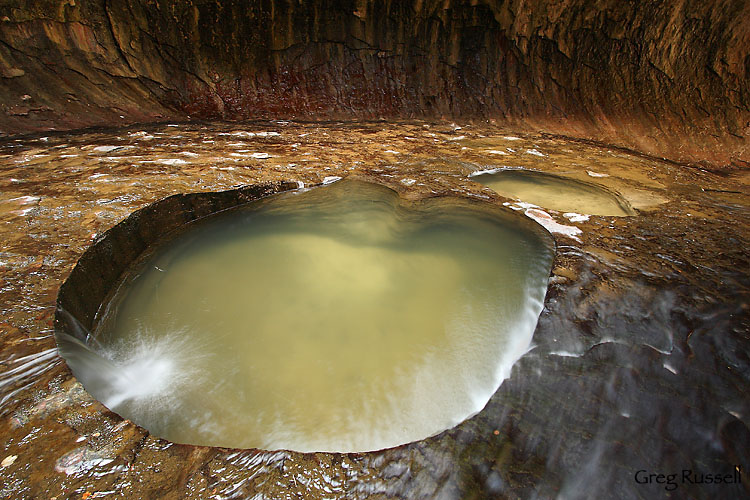 Potholes in the Subway, Zion National Park, Utah, September 2009
Potholes in the Subway, Zion National Park, Utah, September 2009
My method seemed to have worked. After 2 major swims, my gear was all dry! However, my biggest concern was whether my gear was crushed. Earlier in the day, I took a tumble that was less than hair raising, but just barely. I slipped on the steep descent into the canyon, and nearly went over the edge, as the sand just kept falling away from underneath me. Fortunately my gear was all OK. I *only* suffered a pretty torn up elbow, which is better than the alternative.
As it turned out, Labor Day weekend is very busy, with the canyon’s daily visitation quota filled to capacity. We did have to linger a while in the Subway proper for crowds to clear out, but that allowed some clouds to come in allowing the contrast to be reduced. It made for a satisfying, but late day in a beautiful canyon. On our hike out, I did regret not bringing my telephoto lens. We came across one of the largest (and most beautiful) king snakes I’ve ever seen, and it would have been nice to document that. Alas.
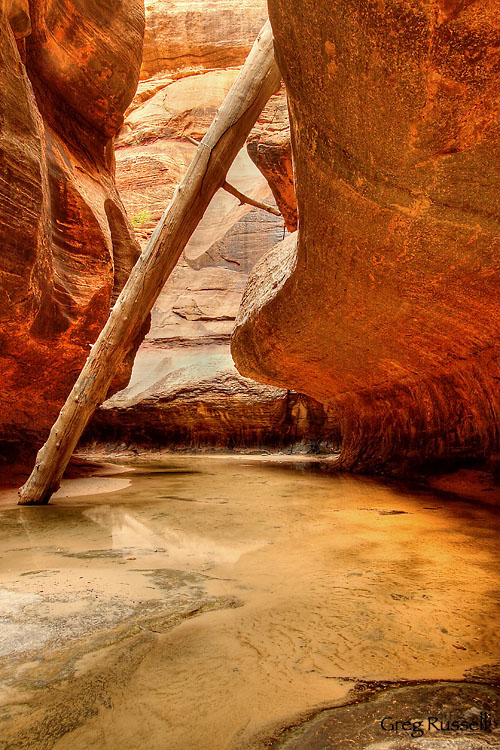 Fallen log, Zion National Park, Utah, September 2009
Fallen log, Zion National Park, Utah, September 2009
So it was that we were able to experience (and photograph) one of the little seen places in our national parks. The next time you visit a popular tourist attraction, consider getting off the beaten path, having an adventure, and photographing something out of the ordinary.
*Note that the Subway can be accessed from either upcanyon or downcanyon. Most photographers I think prefer to hike in from the bottom, as it avoids all the technical sections, as well as the swims (although its still a good idea to dry bag your gear). We hiked in from above, choosing to “suffer” through the technical sections. My body took a beating as a result, but it was so worth it.
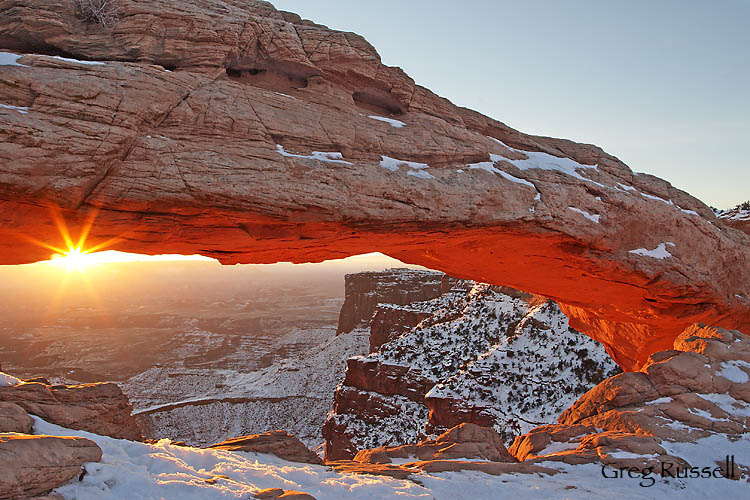 Mesa Arch at sunrise, Canyonlands National Park, Utah, December 2008
Mesa Arch at sunrise, Canyonlands National Park, Utah, December 2008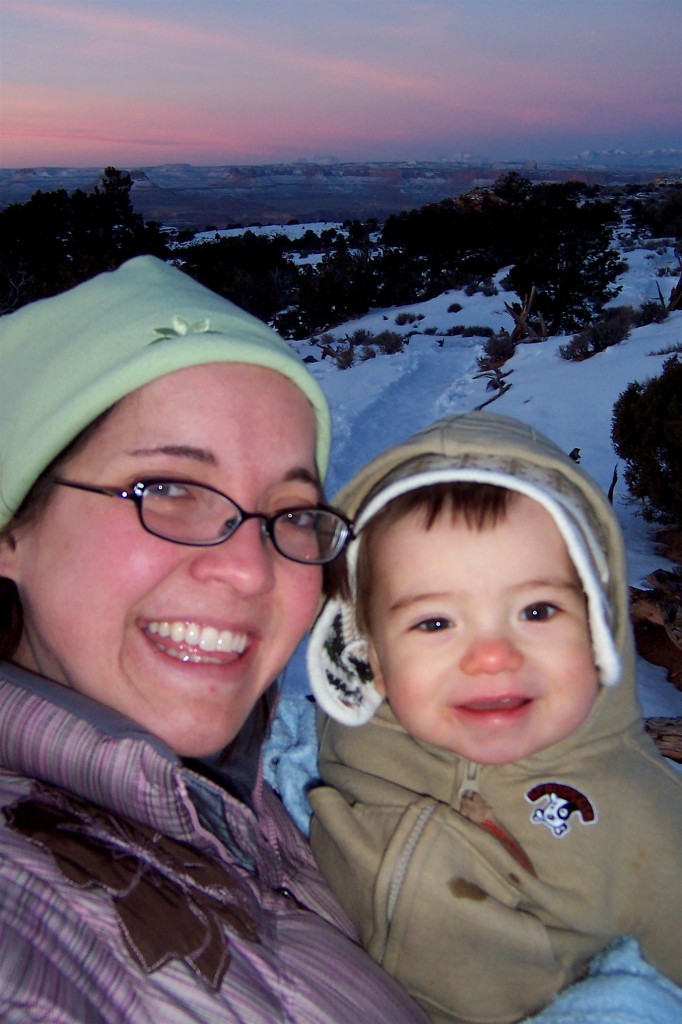 Stephanie and Owen Russell, December 2008 (self portrait by Stephanie Russell)
Stephanie and Owen Russell, December 2008 (self portrait by Stephanie Russell)
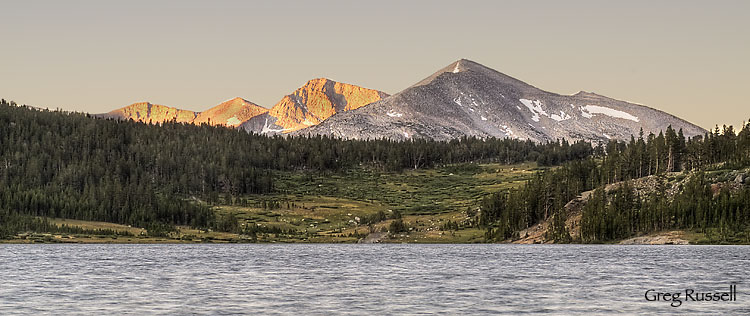
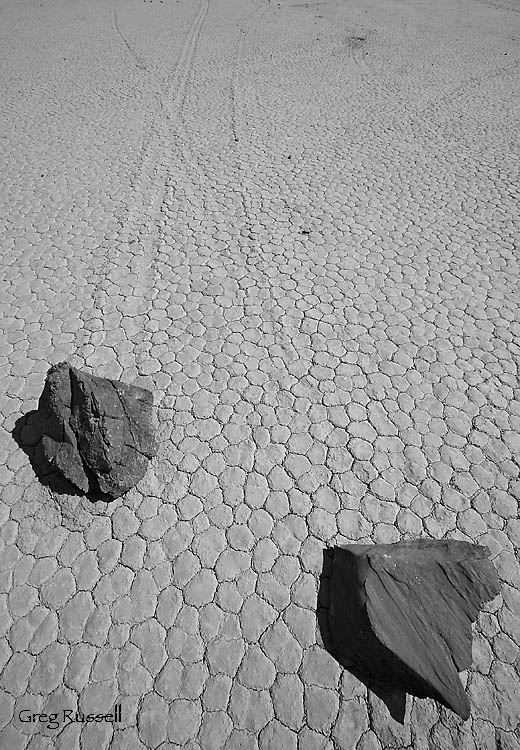
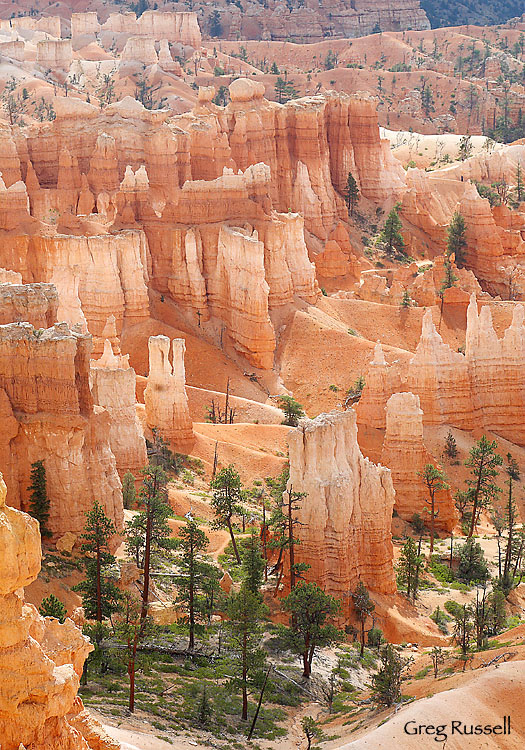
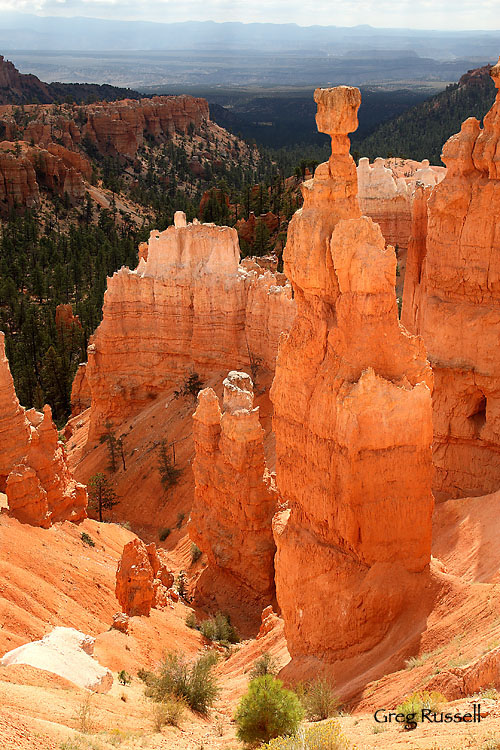
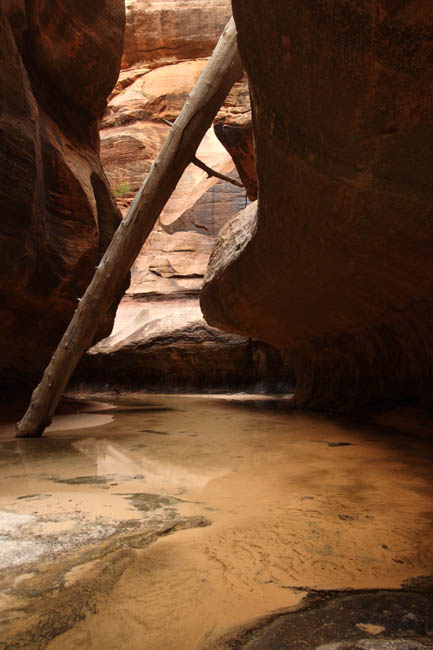

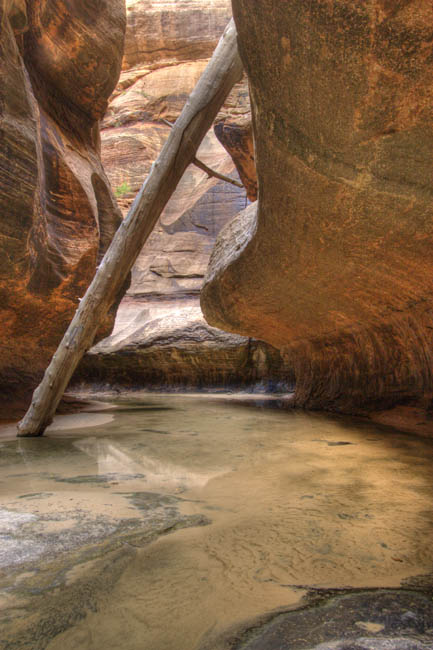
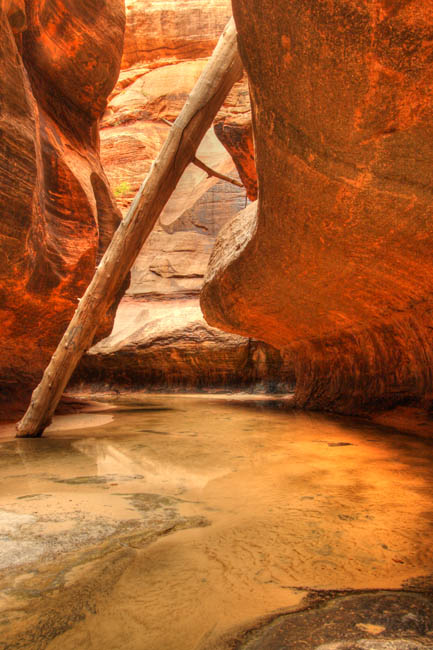
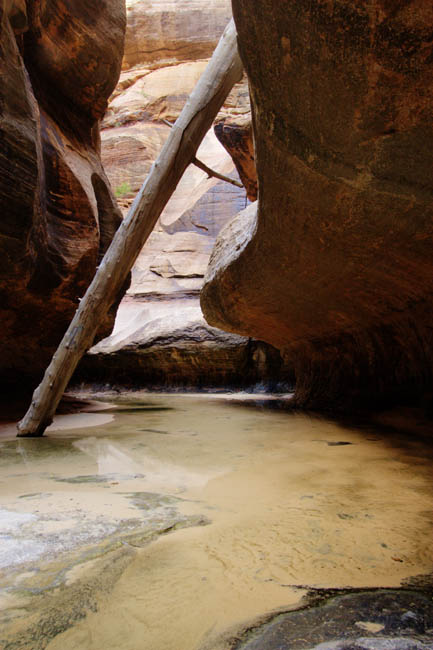

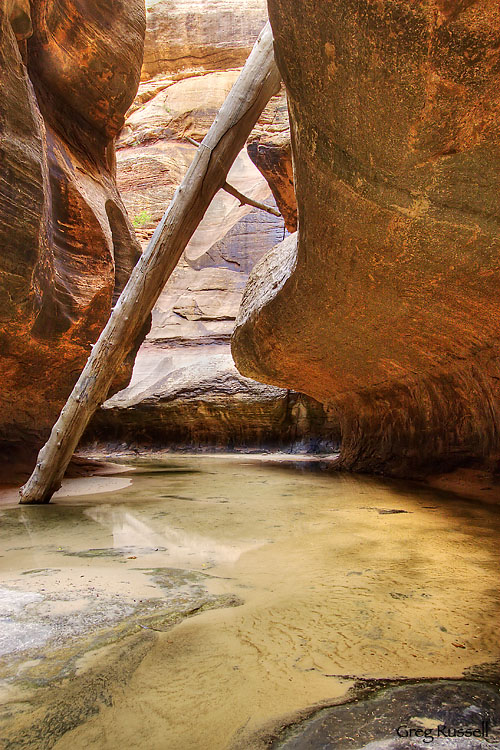

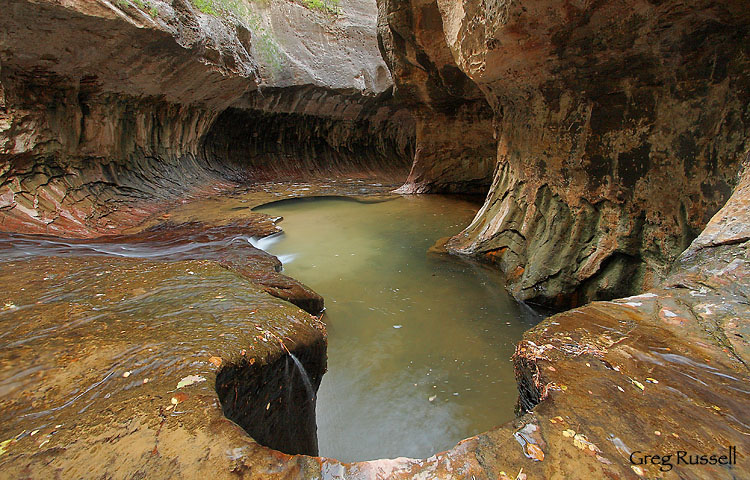



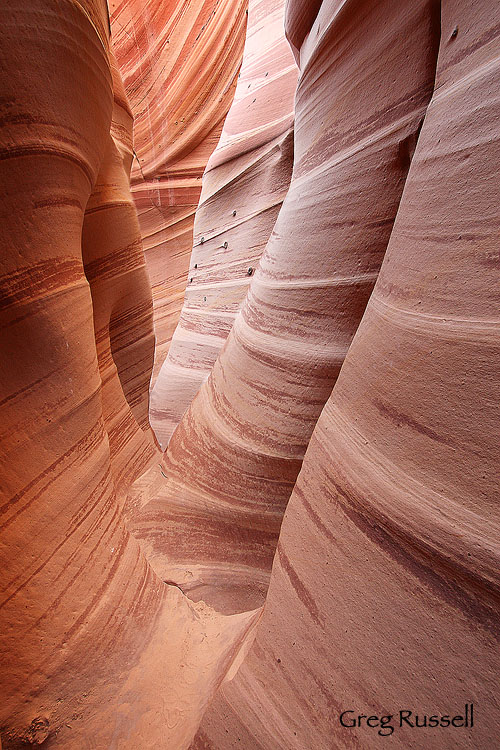
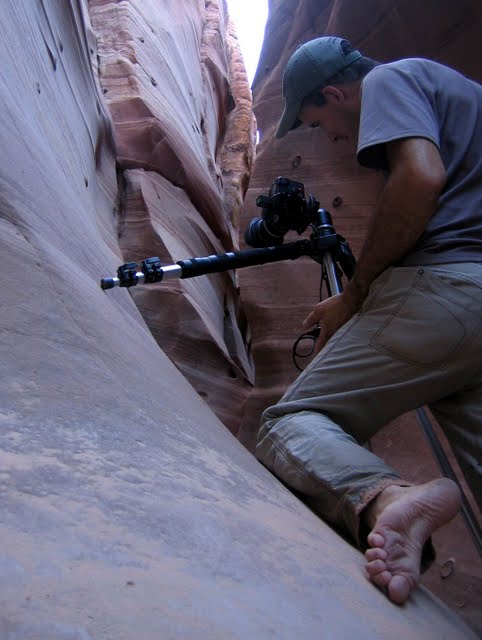 Greg photographing in Zebra Canyon, August 2009 (photo by Brent Deschamp)
Greg photographing in Zebra Canyon, August 2009 (photo by Brent Deschamp)